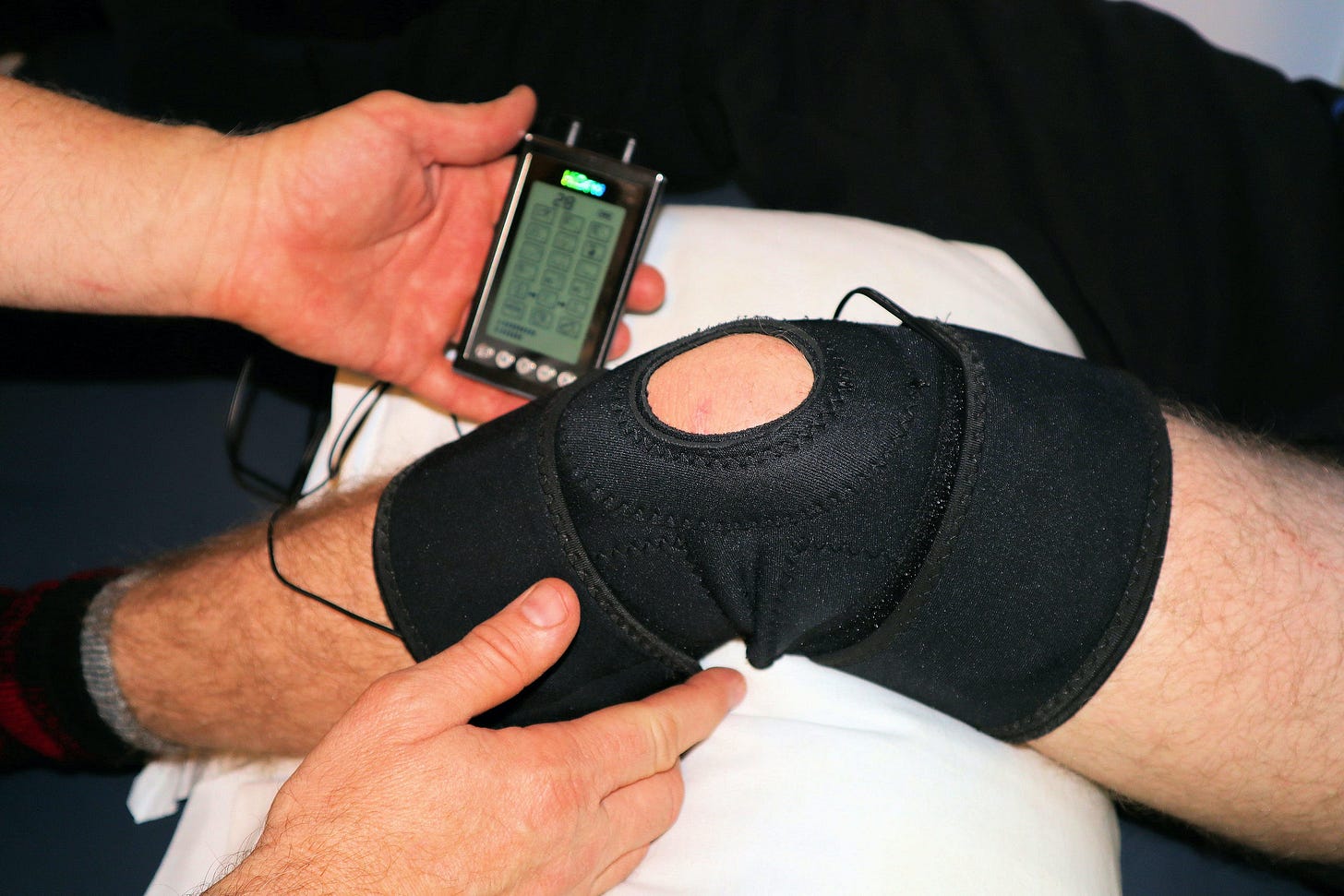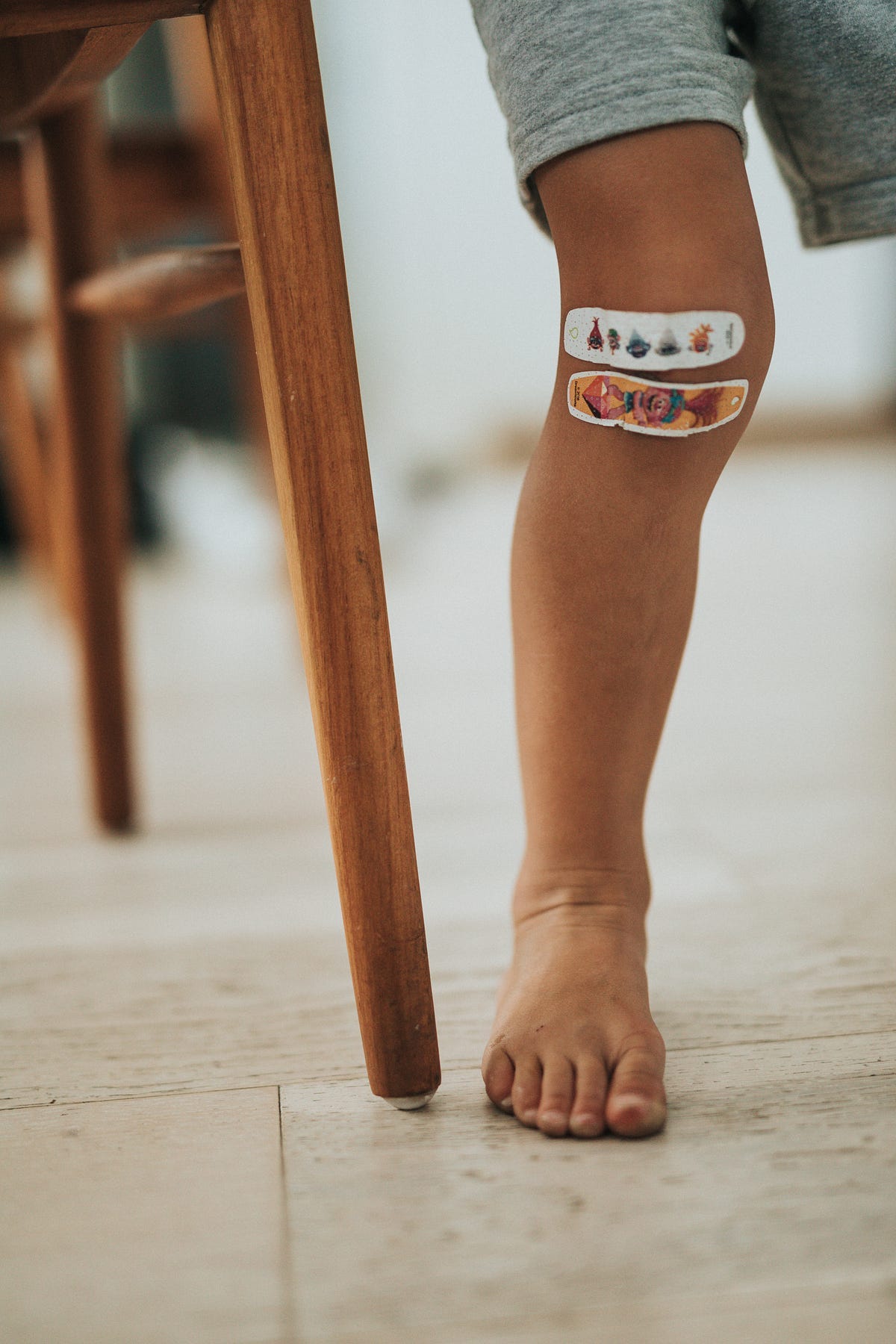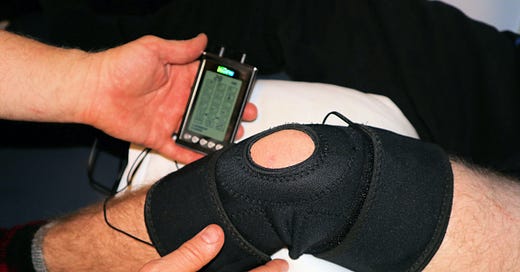Knee Pain Demystified
A comprehensive guide to the causes, and tips that will help to alleviate the condition
A comprehensive guide to the causes, and tips that will help to alleviate the condition

A sore knee is a pain in the…well, knee. We’ve all had one at some time, but what causes it, and how do you get rid of the pain?
Here, let me help you
As a former fitness coach and a national standard squash player, I’ve had the privilege of working with clients from all walks of life, many of whom have faced the common complaint of knee pain. This condition doesn’t discriminate; it can affect both the fit and the less active, whether you’re a weekend warrior on the squash court or simply navigating daily life.
Potential Causes of Knee Pain
Knee pain can be triggered by a range of factors, including overuse or repetitive strain, muscle imbalances, ligament or tendon injuries, arthritis, obesity, trauma, and poor footwear choices. Understanding the underlying cause of your knee pain is crucial for finding the right solution.
In this comprehensive guide, I’ll help you understand the different types of knee pain, their potential causes, and how to alleviate them.
Types of Knee Pain
1. Anterior Knee Pain
In Plain Language: Anterior knee pain is discomfort located in the front part of your knee, just below the kneecap. It’s often seen in younger, active individuals, and it can result from overuse, irritation, or inflammation of the patellar tendon (the tissue connecting the kneecap to the shinbone). This type of pain can make activities like squatting, jumping, or running painful.
To alleviate anterior knee pain, consider exercises that strengthen your quadriceps and patellar tracking, or use a knee strap for support.
2. Medial Knee Pain
In Plain Language: Medial knee pain occurs on the inside of your knee. It can happen due to injuries of the medial collateral ligament (MCL) or tears in the medial meniscus, which is the cushioning cartilage on the inner side of your knee. It may lead to pain, swelling, and difficulty moving the knee. Physical therapy, bracing, and proper rest can help alleviate this type of pain.
Many of my students experienced this after heavy exercise, and I found that rest was the most effective treatment.
3. Lateral Knee Pain
In Plain Language: Lateral knee pain affects the outer side of your knee and can be the result of issues like iliotibial band syndrome or lateral collateral ligament (LCL) injuries. The iliotibial band runs along the outside of your thigh and can cause friction at the knee, leading to discomfort. LCL injuries can cause pain and instability on the outer part of the knee.
Stretching, foam rolling, and strengthening exercises can provide relief.
This is common if you overdue things when first starting out on an exercise regime.
4. Posterior Knee Pain
In Plain Language: Posterior knee pain is found at the back of the knee and may be due to various factors, including hamstring injuries or the presence of a Baker’s cyst, which is a fluid-filled sac behind the knee. It can lead to stiffness and discomfort when bending or straightening the knee.
Gentle stretching and strengthening exercises can help alleviate discomfort.
This is one of those nagging, annoying pains, rather than giving any sharp sensations. It is more annoying than disabling.
5. Arthritic Knee Pain
In Plain Language: Arthritic knee pain is a chronic condition that often occurs as people age. It’s caused by the gradual breakdown of the knee’s cartilage, leading to joint pain, swelling, and stiffness. This pain can be constant and may worsen over time.
Low-impact exercises, physical therapy, and medications can be effective in managing arthritis-related knee pain. A most common problem, usually caused by the ageing of ligaments and tendons, and affects both active and inactive people.
Other than pain relieving medication or surgical intervention, regular gentle stretching exercises can be benificial, depending on the extent of the cartilage degeneration.
6. Patellofemoral Pain Syndrome
In Plain Language: Patellofemoral pain syndrome is characterized by discomfort around or behind the kneecap. It’s often linked to muscle imbalances or issues with the way the kneecap tracks in its groove. This can result from activities like climbing stairs, sitting for extended periods, or bending the knee. This pain can be sporadic, sometimes bothering you and then disappearing for a few days before reappearing.
It’s a knee pain that can affect you whether you are fit or not, and is fairly common in those who are overweight. I have found that a knee brace is the best short term help
Physical therapy, strengthening exercises, and bracing can provide relief.
Alleviation Techniques
While I’m not a substitute for medical advice, there are some general techniques that may help alleviate knee pain:
RICE (Rest, Ice, Compression, Elevation): Use this approach for acute injuries to reduce inflammation.
Stretching and Strengthening Exercises: Tailored to your specific condition, these exercises can promote healing and reduce pain.
Supportive Braces or Sleeves: These can provide stability and reduce pain during movement.
Massage Therapy: Helps release muscle tension and improve circulation in the knee area.
Over-the-Counter Pain Relief Medication: Consider these with guidance from a healthcare professional.
Assistive Devices and Gadgets: Can make daily activities easier, such as using a cane or knee-friendly footwear.

When to Seek Medical Help
It’s essential to know when your knee pain may be a sign of a more serious problem. Consult a medical professional if you experience:
Sudden and severe pain
Inability to bear weight on the affected knee
Swelling, redness, or signs of infection
Joint deformity
Pain that doesn’t improve with rest and home care
Remember, this blog is not a substitute for professional medical advice. Always consult with a healthcare specialist for personalized guidance.
Knee Pain Across Ages and Genders
Knee pain can affect anyone, regardless of age or gender. However, the underlying causes and prevalence may vary. Younger individuals are more prone to sports-related injuries, while older adults are at greater risk of arthritis. It’s essential to tailor your approach to your specific circumstances.
Stay Informed and Seek Help
Knee pain can significantly impact your quality of life, but with the right knowledge and guidance, you can take control of your well-being. Whether you’re a young athlete or an older individual, understanding the causes, types, and alleviation methods for knee pain can make a world of difference.
In this ever-evolving field, new techniques and theories emerge, so it’s vital to stay informed. Always consult with a medical professional for the most accurate advice on managing knee pain.
So, take the first step towards a pain-free life and consult a specialist for personalized guidance.
Remember, your knees are your body’s unsung heroes, and they deserve the best care.




